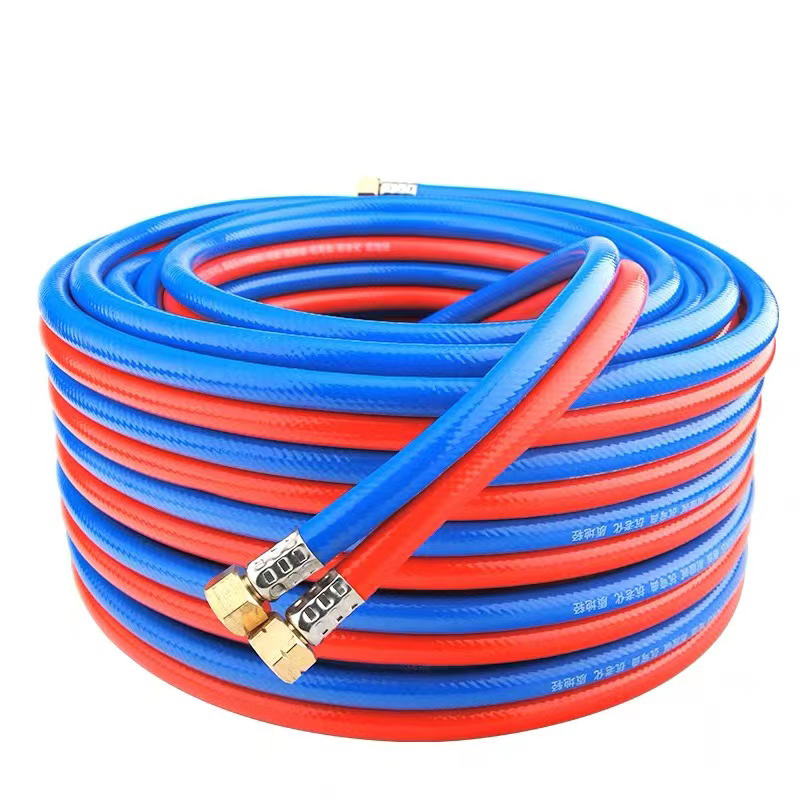Comparing PVC and Rubber Air Hoses for Durability and Performance
PVC Air Hose vs. Rubber Choosing the Right Hose for Your Needs
When it comes to pneumatic systems, the choice of air hose material can significantly impact efficiency, durability, and overall performance. Two popular options in the market are PVC (polyvinyl chloride) and rubber air hoses. Each has its unique advantages and disadvantages, making it essential for users to understand the differences to select the best hose for their specific applications.
Durability and Flexibility
Rubber air hoses are renowned for their exceptional durability and flexibility. They can withstand extreme temperatures, making them suitable for both indoor and outdoor use. Rubber hoses are also more resistant to wear and tear caused by abrasion and impact, which is particularly beneficial in industrial environments where hoses may be dragged along rough surfaces. This durability allows rubber hoses to have a longer lifespan when compared to PVC hoses.
On the other hand, PVC air hoses are more rigid and less flexible than their rubber counterparts. While they can handle moderate levels of pressure, extreme temperatures and harsh conditions can compromise their integrity. PVC hoses tend to harden over time, especially when exposed to sunlight or extreme cold, leading to cracks or leaks. However, they do offer a lightweight alternative, making them easier to transport and handle in less demanding environments.
Cost-Effectiveness
When it comes to cost, PVC air hoses generally have the upper hand. They are typically less expensive than rubber hoses, making them an attractive choice for budget-conscious consumers or businesses. If you are working on a project with limited financial resources, investing in a PVC hose can provide satisfactory performance for general tasks without breaking the bank.
pvc air hose vs rubber

Nevertheless, lower initial costs can sometimes lead to higher long-term expenses. While PVC hoses may be cheaper upfront, their shorter lifespan could result in frequent replacements, which can add to overall costs. In contrast, investing in a more durable rubber air hose can save money over time by reducing the need for replacements and repairs.
Application Suitability
The choice between PVC and rubber hoses often boils down to the application. PVC hoses are commonly used in light-duty applications such as air and water transfer in gardening, home improvement projects, and for indoor use in companies with less demanding environments. Their lightweight nature makes them perfect for tasks that require portability and ease of use.
Rubber air hoses, however, excel in heavy-duty applications. Industries like construction, manufacturing, and automotive repair rely on their robust nature to handle rigorous demands. For tasks involving high pressure or exposure to harsh chemicals, rubber hoses are far superior due to their resistance to degradation.
Conclusion
In conclusion, both PVC and rubber air hoses have their distinct advantages and drawbacks. The decision ultimately hinges on specific needs, including budget constraints, intended usage, and the environmental conditions the hose will face. For casual or light-duty tasks, a PVC hose may suffice, offering a cost-effective solution. However, for those requiring a robust and durable option for heavy-duty applications, investing in a rubber air hose can provide longevity and performance assurance. Assessing your unique needs will guide you in selecting the ideal air hose for optimal efficiency and reliability.
-
Top Quality Oxy Acetylene Hoses for Sale Fit for Welding DemandsNewsJul.28,2025
-
The Future of Pneumatic Air Tubes in IndustryNewsJul.28,2025
-
Superior and Reliable LPG Hose Pipe Solutions for Every NeedNewsJul.28,2025
-
Exceptionally Durable and Versatile Premium Braided PVC TubingNewsJul.28,2025
-
Best Adapters for Connecting Garden Hose to PVC Pipe ConnectionsNewsJul.28,2025
-
The Essential Role of LPG Hoses in Safe and Efficient Gas DistributionNewsJul.16,2025














